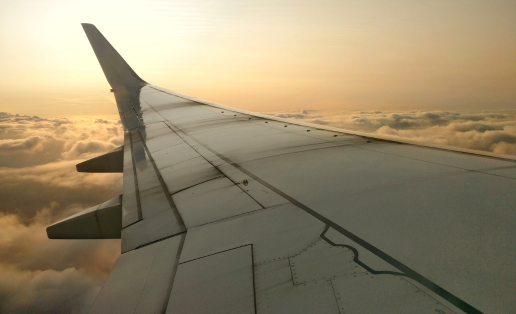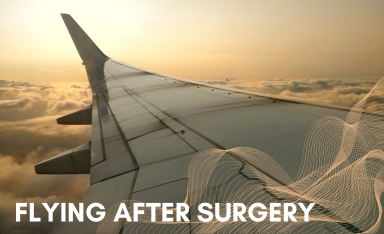
When Can I Fly After My Surgery?
Your Recovery Travel Guide
Planning your recovery timeline is just as important as choosing your procedure. If you’re considering plastic surgery and wondering about travel plans afterward, this guide will help you understand the safe timeframes for flying post-surgery.
Understanding Your Recovery Journey:
Recovery isn’t just about healing incisions – it’s about allowing your body the time it needs to adapt and respond properly to your procedure. Flying too soon after surgery can create unnecessary complications that may impact your results and overall wellbeing.
“Recovery is not a race. Every patient heals differently, and we always prioritise safety over convenience when it comes to travel recommendations.” – Dr. Adam Honeybrook, Valley Plastic Surgery
When It’s Safe to Fly: Procedure-Specific Guidelines
Your surgery type and your surgeon’s directives will determine your travel timeline. Below is what our surgical team recommends in general:
Facial Procedures:
- Rhinoplasty (nose surgery): 2-3 weeks minimum
- Facelift: 3-4 weeks minimum
- Minor facial procedures: 1-2 weeks minimum
Body Contouring Procedures
- Abdominoplasty (tummy tuck): 4-6 weeks minimum
- Belt lipectomy: 6-8 weeks minimum
- Back bra lift: 3-4 weeks minimum
Breast Surgery
- Breast augmentation: 1-2 weeks minimum
- Breast lift or reduction: 2-3 weeks minimum
- Combined procedures: 3-4 weeks minimum
These timeframes are broad suggestions only. Your surgeon and the nursing team will be able to provide a specific timeframe based on the procedure type, your individual healing process, final destination and support network.
Why the Wait Matters
Air travel presents unique challenges during recovery. Cabin pressure changes can increase swelling, particularly affecting facial procedures like rhinoplasty. Prolonged sitting reduces circulation, raising the risk of blood clots – a serious concern after any surgery, especially extensive body contouring procedures.
During your initial recovery weeks, your body is working hard to heal. This process requires adequate rest, proper nutrition, and minimal stress. Early travel can compromise this delicate healing phase.
Your Pre-Flight Checklist
Before booking any post-surgery travel:
✓ Obtain surgical clearance from your surgeon
✓ Schedule your follow-up appointments before departure
✓ Discuss pain management options for travel
✓ Arrange appropriate travel insurance that covers post-surgical complications
✓ Plan for compression garments during flight
✓ Organise assistance with luggage handling
Making Travel Safer When You’re Ready
When your surgeon clears you for travel, these strategies help ensure comfort and safety:
Your care team will discuss a wound healing plan after surgery. At this point, you may discuss any travel plans. However, in general, all incisions should be fully closed before departure. This is particularly important if you’re traveling to destinations where it’s hot or humid, as it may expose areas to bacteria or cause excessive sweating around incision sites. Similarly, it is not recommended to resume swimming or water activities until 4-6 weeks post-surgery.
- Stay hydrated throughout your journey. Cabin air is particularly dry, which can impact healing and increase discomfort.
- Move regularly during flights. Set reminders to walk the aisle every hour to maintain healthy circulation.
- Wear compression garments as recommended by your surgical team.
- Pack medications in carry-on luggage, including any prescribed pain relief.
- Choose aisle seats when possible for easier movement and bathroom access.
A Word About Overseas Surgery
While we understand the appeal of combining surgery with travel, particularly for patients considering procedures overseas, this approach carries significant risks. Flying immediately after surgery in another country means you’ll be separated from your surgical team during the most critical healing period.
Complications can arise days or weeks after surgery, and continuity of care with your surgeon is invaluable during recovery. Emergency rooms in your home location may not have access to your surgical details or be familiar with your specific procedure.
“The relationship between surgeon and patient doesn’t end when you leave the operating theatre. The recovery period is when that relationship becomes most important.” – Dr. Matthew Cheng, Valley Plastic Surgery
Your Recovery Is Individual
Remember that these guidelines represent minimum timeframes. Your surgeon knows your case best and may recommend longer recovery periods based on:
- The complexity of your procedure
- Your overall health status
- How well you’re healing
- Any minor complications during recovery
Special Considerations for Regional Patients
For patients travelling from regional Queensland or northern NSW to Brisbane for their procedure, we understand that travel planning involves additional considerations. Your Valley Plastic Surgery care team will provide specific guidance tailored to your journey home, taking into account factors like drive time versus flying, accommodation needs during initial recovery, and ensuring you have access appropriate medical support once you return to your local area.
Planning Your Journey Forward
Recovery planning should be part of your pre-surgical preparation. Discuss your travel needs during your consultation so your surgical team can provide personalised guidance that fits your lifestyle and commitments.
Your surgeon’s recommendations aren’t just medical guidelines – they’re your roadmap to optimal results and safe recovery. When you prioritise proper healing time, you’re investing in the best possible outcome from your procedure.
For personalised advice about flying after your specific procedure, contact Valley Plastic Surgery to discuss your individual recovery timeline. Our experienced surgical team provides comprehensive post-operative guidance to ensure your safety and optimal results.



